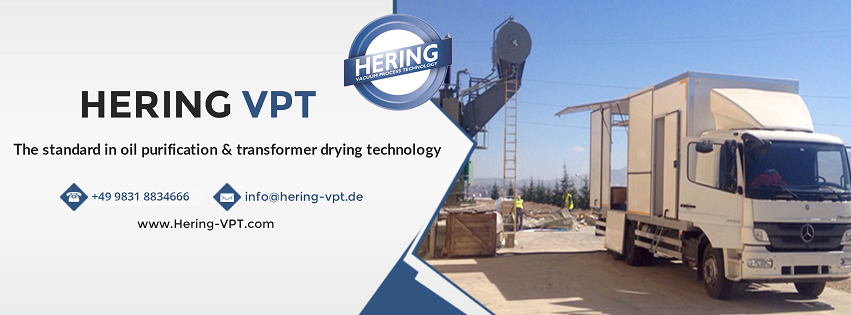
Power transformers are considered important equipments in the power transmission and distribution network. Maintenance of such equipments play vital role in the effective utilization of the available power grid network. The two major factors that influence the degradation of life of transformer are thermal and mechanical stress. Let us see why preventive maintenance of transformer is important and mandatory in the industry. Transformers engaged in service are continuously tracked through online monitors and sensors which send alarm signals to the control engineer if any abnormalities detected. The data collected through these monitoring systems are used in maintenance scheduling and decision making process and helps in extending the life of transformer to a considerable extent.
Ageing and insulation failure are the major causes for the premature failure of the transformer. The solid insulation (cellulose paper) and the transformer oil undergo ageing process due to the overloading and excessive heat developed due to short circuit. Above hot spot temperature the ageing process become irreversible. Therefore maintenance of transformer is extremely important in order to utilize the maximum capacity of the transformer.
High rated power transformers use liquid insulation so as to with stand the heat generated and due to their electrical resistance. High quality transformer insulating oil should not enhance the degradation of the transformer solid insulation and corrosion of the transformer windings. The commonly used liquid insulation in the transformer is mineral oil due to its extended dielectric properties and heat dissipating action. The mineral oil is an extract obtained by refining the crude oil hence contains hydro carbons. Now-a-days, natural Ester and vegetable oil are also used as insulating liquids for transformer due to their high breakdown voltage. It is essential to closely monitor the condition of the cellulose paper and oil, thereby occurrence of any incidental faults can be prevented. In order to maintain the oil quality, testing the oil periodically is essential. New testing oil samples are collected regularly and analyzed thoroughly and the information like breakdown voltage, moisture content, the amount of hydrocarbons are calculated with the available data and are compared with the set values / international standard values. Transformer preventive maintenance is very important. If any abnormalities prevail, immediate preventive action can be taken to avoid any unexpected outages.
The principal factor affecting the life of transformer oil is oxidation. Where ever the equipments are in free contact with the environment the process of oxidation is in avoidable. The rate of oxidation increases with the increase in operating temperature of the transformer oil. Oxygen reacts with oil and results in the formation of acids and sludges and also catalyzes the process of ageing in the transformer oil. The formation of acids and aldehydes changes the characteristics of the oil. The end products obtained through oxidation will affect the electrical properties of the oil. The sludge material gets deposited on the transformer windings which affects the heat dissipation in the windings and leads to severe faults in the transformer.
Dissolved Gas Analysis :
Most of the transformer failure occurs due to the accumulation of dissolved combustible gases in the insulating oil. Various methods have been framed for diagnosing the gases in the oil. The best method to analyze and study the samples of transformer oil is the dissolved gas analysis (DGA) method .The quality of the insulating oil is tested and used for the determination of oil health. The collection of samples for testing the oil should be given more care as the quality of the testing samples will be varying time to time and hence accurate results and analysis cannot be performed. Therefore the collected samples should be tested immediately as soon as possible to avoid variations. The DGA is considered as most informative as it enquire all the needed data from the samples. The composition of all the gases that are dissolved in the oil are completely analyzed. The results obtained from the analysis are used in the decision making process of preventive maintenance of transformer. The mineral oil used is a mixture of complex hydrocarbon molecules. These molecules undergo decomposition when subjected to electrical and thermal stresses. The breakdown results in the formation of ethane, acetylene, ethylene etc. and the degradation of cellulose insulation paper emits methane, hydrogen gases. The amount of gases emitted depends upon the rate of increase in temperature and the volume of oil subjected to decomposition. Constant improvement in the formation of dissolved combustible gases in the oil leads to severe decrease in the life expectancy of the transformer. In addition to these gases other chemical compounds such as Furans ( 2- Furfuraldehyde) are formed in the transformer oil due to the cellulose paper degradation which finally leads to insulation system failure. Therefore by diagnosing these compounds from the oil clearly indicates the need for maintenance of transformer oil.
Furan Analysis :
Furans are the complex compounds of carbon and hydrogen that gets accumulated in the transformer oil due to the overtime degradation of the transformer cellulose paper insulation. The amount of Furans present indicates the degree of polymerization of the cellulose paper and the water content present in it . If the moisture content is above the limited values the drying of the power transformers can be planned to avoid the solid insulation failure. This test is usually done once in two or three years. The furan analysis indicates the whether the transformer unit can be continued in service or to be taken for maintenance to replace the solid cellulose paper insulation.
In order to prevent any incidental failures in the insulating transformer oil it is necessary to continuously monitor the condition of transformer oil by using expert systems which deploy monitors and sensors. A regular maintenance of transformer oil involves upgradation of the oil before the dissolved gases, sludge material, moisture content and the acid formation exceeds the limiting value set by the international standards. Before the effects of all the above mentioned factors overhaul ,steps should be carried out onsite to recycling transformer oil or reclamation of the transformer oil.
Fibre optic Sensors :
The presence of water and gases worsely contaminates the transformer oil. The dielectric properties of the transformer oil are affected by the water content in the oil which further tends to dielectric break down of the oil. An optical fiber incorporated sensor is designed and controlled by a microcontroller system which tests the input samples made to fed in to it. It measures the refractive index and senses the temperature of the test samples. Artificial neutral network-based software algorithm which is developed, trained and made to be learned. The measured values of refractive index and temperature of samples are fed as input and the artificial neural network correlates these values and calculate the amount of moisture content present in the insulating oil of the transformer. Thereby immediate preventive action can be taken to remove the moisture content.
The maintenance of the power transformers at periodic intervals can extend their life span to a considerable extent. Most numbers of transformers currently in service world wide are more then 30 – 40 years which necessitates the need for smart maintenance techniques. The ageing of transformer almost depends on the insulation system. The quality of insulating oil and the compounds produced in the oil plays a key role in determining the efficiency of the transformer. The quality of the insulating oil can be estimated using the Dissolved gas analysis and if the oil loses its capability to serve it’s purpose of insulating and refrigerating then the oil maintenance procedures should be carried out to avoid accidental failures of the power network.
Maintenance actions :
The maintenance of transformer oil considered cost effective than replacing it by a new one. The oil purification purifies the oil by eliminating the ageing products formed due to the deterioration of the insulation system. Depending upon the results obtained from the oil testing and dissolved gas analysis the expert systems involved in monitoring the transformer oil parameters perform a preventative maintenance action. There exist a wide range of remedial actions as follows.
Oil Reconditioning :
In this process the sludge material formed in the oil are eliminated by physical therapies like filtrating, degasifying, dehydrating the oil. Materials of considerable size, dissolved gas and water are removed but only in a small amount. Therefore when the condition is extreme this technique is not considered worth enough to regain the quality of the insulating oil.
Oil Reclamation :
It is a chemical process that removes the Polar compounds formed due to the oxidation that takes place in the oil. This method restores the quality of the ageing oil of a transformer which is in service nearly to a new oil. The oil is treated in a centrifugal unit in order to remove the solid sludge material and then the whole volume of oil is passed in to a drying unit in the vacuum chamber to remove the moisture content in the oil and also passed through media. This process ensures reduction moisture and acid numbers present in the insulating oil and hence increases the dielectric strength of the insulation system. The rate of dissipation factor has been reduced to a considerable amount. New refined transformer insulation oil will look pure and coloring. Overtime the color of the oil turns to be darker due to the contaminates that gets in to the oil. By this method, the oil color can be restored more or less equal to the new transformer oil. The withstanding resistance of the oil is also raised by this oil reclamation techniques.
Adsorption technique :
The necessity for replacing the transformer oil has brought down by the development of new onsite oil treatment techniques. One of the simple technique is absorption which removes the sludge and products of degradation there by purifying the insulating oil and regenerates the oil as new oil. It is easy to carry out this technique once in six months and also cost effective as it involves very less man power. It also helps in removing the moisture content in the oil and helps in reducing the rate of speed of ageing of transformer insulation. Now-a-days, the absorption equipment is designed inside the transformer itself and can be done once in six months. This method is not suitable when the quality of the insulating oil is found to be extremely affected so that it cannot perform it’s function properly.
Condition Monitoring :
Transformer oil condition maintenance is crucial in the continued operation of the transformer ensuring reliable supply of power to the consumers. This online condition maintenance provides timely instructions to carry out comprehensive maintenance procedures. Transformer insulating materials maintenance guidelines are also encapsulated by the IEC standards. New continuous monitors are now available to track the variations in the condition of the transformer oil and cellulose paper . Sensors are used to collect the data directly from the transformer . The measured data in the analog signal form is converted to digital form which is further used by advanced computing techniques. These smart systems converts the data in to useful information which can be used to forecast the oncoming failure of the transformer insulating materials . This smart monitors continuously tracks the oil level, oil temperature, oil quality , speed of oxidation, rate of degradation of cellulose paper etc and accurately fixes the occurrence of any incipient faults in the transformers. The transformers are capable of destroying themselves if they were not maintained properly. The failure of transformer results in the loss of money more than that required for the effective maintenance of the transformer.


